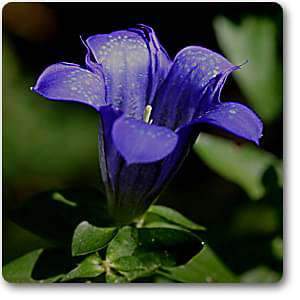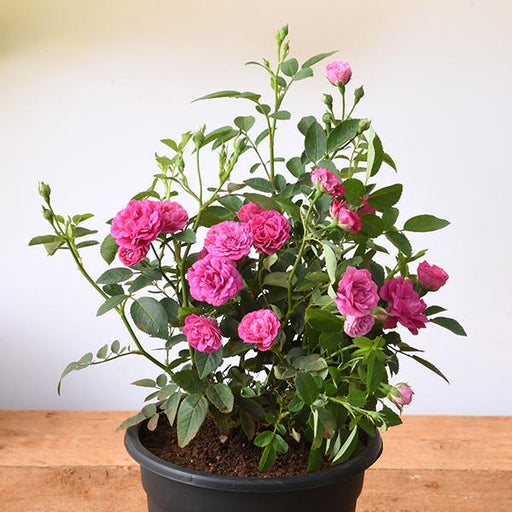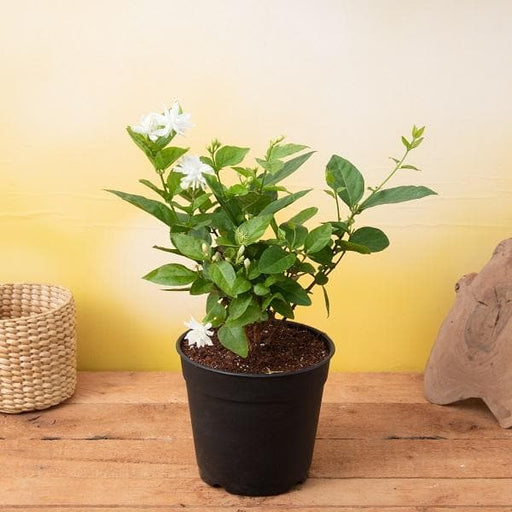
Gentian - Plant
(MRP Inclusive of all taxes)
- Shipping ₹79 for entire order
- Dispatch in 7 days
- Country of origin: India

(MRP Inclusive of all taxes)
 Save 29%
Save 29%
Air Purifier Money Plant with Pot The Air Purifier Money Plant, also known as Pothos or Epipremnum aureum, is a stunning indoor plant that...
View full details
 Save up to 15%
Save up to 15%
Peace Lily, Spathiphyllum - Plant The Peace Lily, scientifically known as Spathiphyllum, is a stunning houseplant celebrated for its elegant white...
View full details
 Save 25%
Save 25%
Jasminum sambac, Mogra, Arabian Jasmine - Plant Jasminum sambac, commonly known as Mogra or Arabian Jasmine, is a fragrant flowering plant...
View full details
 Save 18%
Save 18%
Combo Constituents Includes the Parijat Tree (Night-Flowering Jasmine), a culturally significant plant with fragrant flowers. Description The Pari...
View full details
 Save 25%
Save 25%
Miniature Rose, Button Rose (Any Color) - Plant The Miniature Rose, also known as the Button Rose, is a charming and compact flowering plant that ...
View full details Save 25%
Save 25%
Damascus Rose, Scented Rose (Any Color) - Plant The Damascus Rose, also known as Rosa damascena, is a timeless symbol of beauty and romanc...
View full details
 Save 17%
Save 17%
Beautiful Fragrant Mogra, Arabian Jasmine Plant with Pot The Beautiful Fragrant Mogra, also known as Arabian Jasmine (Jasminum sambac), is...
View full details Save 15%
Save 15%
Pack of Vermicompost and Neem Cake for House Plants Transform your indoor garden with our premium Pack of Vermicompost and Neem Cake, spec...
View full details
Pack of Plant Growth and Flower Boosters Unlock the full potential of your garden with our Pack of Plant Growth and Flower Boosters! This ...
View full details Save 38%
Save 38%
Combo of Jeevamrut and Neem Raksha for Easy Growth and Protection of Houseplants Transform your indoor garden with our exclusive combo of ...
View full details Save 22%
Save 22%
Plant Nutrients Kit (Pack of 16) for a Healthy Garden Transform your garden into a lush paradise with our Plant Nutrients Kit, featuring 1...
View full details Save 16%
Save 16%
Combo of Top Plant Fertilizers Elevate your gardening game with our exclusive Combo of Top Plant Fertilizers, featuring two bags of premiu...
View full details Save 24%
Save 24%
Pack of 4 Additives to Make Soil Healthy and Nutrient Rich Transform your garden into a thriving ecosystem with our Pack of 4 Additives de...
View full details Save 30%
Save 30%
Transform your gardening experience with our premium Combo of Perlite and Vermiculite. This unique blend is designed to enhance soil aeration and ...
View full details Save 27%
Save 27%
Combo of 2 Vermicompost and Cocopeat - Enrich Your Soil Naturally! Transform your garden into a thriving ecosystem with our Combo of 2 Ver...
View full details
 Save 35%
Save 35%
Best 6 Plants for Perfect Indoor Garden Transform your living space into a lush oasis with our curated collection of the Best 6 Plants for a...
View full details
 Save up to 50%
Save up to 50%
Mini Succulent Garden Pack Transform your space with our Mini Succulent Garden Pack, featuring a delightful collection of 4 any variety beautiful s...
View full details
 Save 30%
Save 30%
5 Best Fragrant Plants Transform your garden or indoor space into a fragrant paradise with our curated selection of the 5 Best Fragrant Plants. Th...
View full details
 Save 24%
Save 24%
Set of 2 Bonsai Looking Grafted Adeniums Transform your indoor or outdoor space with our exquisite Set of 2 Bonsai Looking Grafted Adenium...
View full details Save 45%
Save 45%
Top 4 Die Hard Succulents Pack Transform your indoor or outdoor space with our Top 4 Die Hard Succulents Pack, featuring a curated selecti...
View full details
 Save 30%
Save 30%
5 Best Indoor Plants Pack Transform your living space into a lush oasis with our '5 Best Indoor Plants Pack.' This carefully curated collection fe...
View full details
 Save 25%
Save 25%
Set of 4 Evergreen Air Purifier Plant Pack Transform your indoor space into a lush, green oasis with our Set of 4 Evergreen Air Purifier Pla...
View full details| SrNo | Item Name |
|---|---|
| 1 | Gentian - Plant |
Gentian, belonging to the Gentianaceae family, is a captivating perennial plant known for its striking blue flowers and medicinal properties. Native to mountainous regions, this hardy plant thrives in well-drained soils and is often found in alpine meadows. With over 400 species, Gentian is not only a visual delight but also a vital part of traditional herbal medicine, celebrated for its digestive and anti-inflammatory benefits.
Gentian stands out for its vibrant blue hue, which is rare in the plant kingdom, making it a favorite among gardeners and botanists alike. Its historical significance dates back to ancient times, where it was used by various cultures for its healing properties. The plant's ability to thrive in harsh environments showcases its resilience and adaptability, making it a symbol of endurance.
One of Gentian's most remarkable features is its unique flowering pattern, which attracts a variety of pollinators, including bees and butterflies. Additionally, Gentian is known for its role in biodiversity, providing habitat and food for various wildlife species. Its roots contain bitter compounds that are essential in the production of herbal tonics and aperitifs, further enhancing its appeal.
Gentian plays a crucial role in its ecosystem by supporting pollinators and contributing to soil health. Its deep root system helps prevent soil erosion, making it an excellent choice for sustainable gardening practices. By cultivating Gentian, gardeners can promote biodiversity and support local wildlife.
Ah, the Gentian family! A botanical buffet of over 400 species, each flaunting its own unique flair. From the vibrant blue of Gentiana acaulis to the striking yellow of Gentiana lutea, these plants are like the fashionistas of the plant world. They thrive in alpine meadows and rocky terrains, proving that even in harsh conditions, one can still look fabulous. With their trumpet-shaped flowers, they’re not just pretty faces; they also attract pollinators like bees and butterflies, making them the social butterflies of the garden.
Who knew that this stunning plant could double as a medicine cabinet? Gentian has been used for centuries in traditional medicine, primarily for its digestive benefits. It’s like the personal trainer for your stomach, helping to stimulate appetite and ease digestive woes. So, if you’re feeling a bit bloated after that all-you-can-eat buffet, a gentian tincture might just be your new best friend.
Gentians are the ultimate mountain climbers, thriving in rocky, alpine habitats where most plants fear to tread. They’re like the rugged adventurers of the plant kingdom, preferring to hang out in high altitudes and challenging terrains. This love for the wild means they’re often found in places that would make most of us break a sweat. So, if you’re looking for a plant that embodies the spirit of adventure, look no further than the Gentian!
Caring for Gentians is like hosting a high-maintenance guest; they require just the right conditions to thrive. These beauties prefer well-drained soil and a sunny spot, but don’t forget to keep them hydrated! They’re not fans of soggy feet, so a little drought is better than a deluge. With the right TLC, your Gentian will reward you with stunning blooms that’ll make your neighbors green with envy.
If you’re looking to add a pop of color to your garden, Gentians are the way to go! These plants are like the confetti of the landscaping world, bringing joy and vibrancy wherever they bloom. They work wonders in rock gardens, borders, or even as ground cover. Plus, their unique flowers are sure to spark conversations at your next garden party. Who wouldn’t want to brag about their stunning Gentian collection?
Gentians are the ultimate social butterflies, attracting a variety of pollinators with their vibrant blooms. Bees, butterflies, and even hummingbirds can’t resist their charm. It’s like throwing a party in your garden, and everyone’s invited! This pollination party not only helps the Gentian reproduce but also supports the local ecosystem. So, plant a Gentian and watch the guests flock to your floral fiesta!
In the language of flowers, Gentians symbolize strength and determination. They’re like the motivational speakers of the plant world, reminding us to persevere through tough times. With their resilient nature and stunning appearance, they serve as a reminder that beauty can thrive even in adversity. So, if you’re looking for a little inspiration, just take a moment to appreciate the Gentian!
With so many Gentian varieties, it’s like a botanical candy store! From the petite Gentiana verna to the towering Gentiana scabra, there’s a Gentian for every garden personality. Each variety brings its own unique charm and color, making it easy to create a stunning display. So, whether you prefer the classic blue or want to experiment with yellows and whites, the Gentian family has got you covered!
Gentians are picky eaters when it comes to their growth conditions. They thrive in well-drained, slightly acidic soil and prefer a sunny spot with some shade. Think of them as the Goldilocks of the plant world; they want everything just right! If you can provide the perfect environment, they’ll reward you with breathtaking blooms that’ll make all your gardening efforts worthwhile.
Fertilizing Gentians is like giving them a little pick-me-up. They don’t need much, just a light feeding of a balanced fertilizer during the growing season. Too much fertilizer, and you might end up with a plant that’s all show and no substance. So, keep it light and let your Gentian shine in its natural beauty!
With their stunning beauty comes the responsibility of conservation. Many Gentian species are threatened due to habitat loss and climate change. It’s like watching your favorite band break up; you want to do everything you can to keep them around. Supporting conservation efforts and planting Gentians in your garden can help ensure these magnificent plants continue to thrive for generations to come.
Gentian is a flowering plant known for its vibrant blue flowers and medicinal properties. Found in mountainous regions, it’s like nature’s little blue gem, often used in herbal remedies and liqueurs. Think of it as the life of the botanical party, bringing both beauty and health benefits to the table!
Gentian thrives in the cool, mountainous regions of Europe, Asia, and North America. It prefers well-drained soil and plenty of sunlight, making it the diva of the plant world. If you’re looking to cultivate it, just remember: Gentian likes to keep its roots cool and its head in the sun!
Gentian has a long history in herbal medicine, often used to aid digestion and stimulate appetite. It’s like a personal trainer for your stomach, encouraging it to work harder. Just don’t expect it to hit the gym with you; it’s more of a “sip and savor” kind of remedy!
Yes, Gentian is edible, but it’s not your typical salad ingredient. Its roots and flowers are often used to make herbal teas and bitters, adding a unique flavor to cocktails. Just remember, moderation is key; too much Gentian can turn your drink into a bitter experience!
Propagating Gentian can be done through seeds or division. If you’re feeling adventurous, try starting from seeds in the spring. Just be patient; Gentian likes to take its time, much like a cat deciding whether to sit on your lap!
There are over 400 species of Gentian, each with its own quirks. Some popular ones include Gentiana lutea, known for its tall stature and medicinal roots, and Gentiana acaulis, the charming little blue flower. It’s like a botanical family reunion, with each member bringing their own flair!
Gentian is generally considered non-toxic to pets, but that doesn’t mean they should munch on it like a salad bar. If your furry friend decides to take a nibble, keep an eye out for any unusual behavior. Better safe than sorry; after all, we don’t want them turning into little blue creatures!
Caring for Gentian is a breeze! Provide well-drained soil, moderate watering, and a sunny spot. It’s like giving your plant a spa day: a little pampering goes a long way. Just avoid overwatering; Gentian prefers to keep its feet dry, not swimming in a puddle!
Yes, Gentian can survive winter, especially in its native habitats. It’s like the tough cookie of the plant world, hunkering down and waiting for spring. Just make sure to mulch around the base to keep its roots cozy during those chilly months. A little warmth goes a long way!
Gentian loves cool temperatures, well-drained soil, and partial to full sunlight. Think of it as the Goldilocks of plants: not too hot, not too dry, just right! If you can mimic its natural alpine habitat, you’ll have a happy Gentian blooming in no time.
Gentian typically takes about 2-3 years to bloom from seed. It’s like waiting for a fine wine to mature; good things come to those who wait! Once it finally flowers, you’ll be rewarded with stunning blue blooms that make the wait worthwhile. Patience is a virtue, after all!